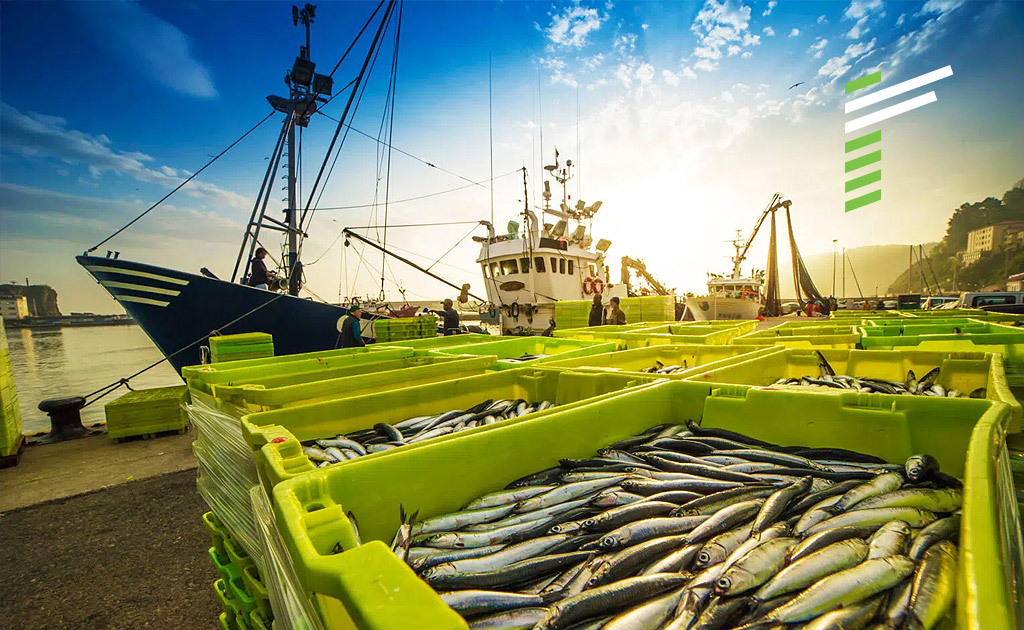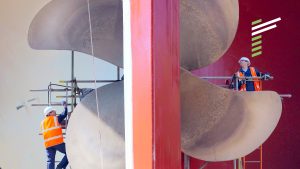Background
Our client is a leading and internationally recognised seafood, agri-processing and branded Fast Moving Consumer Goods (FMCG) business. Their operations cover the entire value chain from harvesting the catch into a variety of chilled and frozen seafood products, to sales, ensuring that the products meet customer expectations. Their wild-caught and farmed products are packaged and marketed to local and international customers.
The Challenge
Their operations are divided into:
- The freezer fleet, which catches, processes, packs, and freezes finished products at sea for onward shipment to export markets. These vessels can spend up to six weeks at sea;
- The fresh fleet, which catches, partially processes, and chills seafood for delivery to a shore-based factory for further processing. The number of days at sea for these vessels is limited by the age of the oldest fish caught, so they can spend a maximum of six days at sea.
Due to the limited number of quota days, maximising the vessels’ fishing time is a key business driver, which was also the objective of the project.
Analysis
The processes required to complete vessel turnarounds at the end of each voyage were causing significant delays. Upon analysis, we found that these delays were primarily the result of:
- Poor scheduling of fresh vessels
- Poor coordination and planning of quay loading and unloading activities
- Over-reliance on third-party vendors
- Insufficient planning of necessary maintenance and repairs
- Poor use of fleet workshop resources
- Delays caused by inefficient crew logistics
As a result of these issues, the company’s procurement policy was compromised in order to expedite vessel turnarounds, ultimately leading to increased operating costs.
Project Approach
A task force was established to achieve the primary objective of this initiative, which was to reduce vessel turnaround time. This task force consisted of Renoir consultants and client personnel. To prepare the client’s personnel, they were trained in change management techniques by Renoir consultants.
After the training, the joint team finalised their plans and set targets. Activities were outlined for three work streams – port operations, maintenance and repairs, and procurement.
“I was impressed by the simple, logical tools developed by the Renoir consultants to ensure that operational processes are better measured, managed and allocated to staff.”
Fleet Executive
Implementation
The following activities were carried out for the three work streams:
1. Port operations
Focus: Schedule port turnaround activities
Activities:
- Developed a detailed sequence of activities and, through observation, established standard times for each activity per vessel, resulting in the determination of a port call duration per vessel per port.
- Implemented a daily scheduling and rescheduling system for the fresh fleet vessels to balance and optimise the use of port-side resources according to fish age and factory demand.
- Streamlined crew logistics to improve the predictability of port call durations.
- Introduced weekly review meetings to assess the previous week’s performance, formulate plans for the coming week, and address any identified non-conformances.
2. Maintenance and repairs
Focus: Improve job planning and fleet workshop capacity
Activities:
- Increased the planning window by introducing a daily vessel work request from the vessel’s chief engineer to the shore-based vessel superintendent.
- Installed a vessel maintenance planning board to act as a central hub for estimating, prioritising, and tracking work requests from receipt, to work allocation, whether to the fleet workshop or a third-party vendor, through procurement processes until the job reaches a ready backlog status.
- Introduced a system for prioritising schedule ready backlog jobs based on estimated completion times, to fill the planned docking schedule slots.
- Introduced maintenance specific docking windows with fixed duration, allocating time as needed based on a vessel’s maintenance backlog.
- Optimised fleet workshop capacity by developing a capacity scheduling tool to facilitate the forward booking of available capacity and enabling the workshop to prioritize job acceptance, taking into account their capabilities and capacity.
- Introduced daily planning and review meetings to assess performance by comparing daily progress against weekly docking schedule boards.
3. Procurement
Focus: Improve compliance with corporate policy and achieve targeted cost reductions
Activities:
- Improved compliance with corporate policy. This was achieved through the development of a fleet-specific interpretation of corporate policy that addresses the challenges of fleet operations. Staff training was also provided using the customised interpretation. Regular non-compliance reports were developed and seamlessly integrated into weekly review meetings.
- Developed a structured approach to achieving targeted cost reductions. The approach includes detailed analyses of historical expenditure on a Pareto basis; strategic initiatives to negotiate terms with vendors; and changes in working practices.

Realigning Structure and Processes: Why organisation design matters

Fix it before it breaks: Maintenance planning for operational excellence

Effective Resource Planning for Profits and Productivity

Understanding on-the-job coaching for performance breakthrough
Ready for a change in your organisation?
Results
A 140% increase in the number of days at sea, adding 134 more fishing days per year across the fleet of eight vessels, exceeding the target of 96 days.
An additional 36 fishing days for the four freezer vessels against a target of 39 days
A 24% increase in workshop capacity utilisation (80% actual versus 56% baseline), resulting in an annual benefit of over US$160,000
Cost reductions of over US$315,000
By the end of the project, vessels turnarounds were more predictable, even during disruptions caused by fishing conditions and catch rates. Turnaround were significantly improved, resulting in a higher level of reliability and a reduction in unexpected delays.
Daily monitoring of maintenance backlogs has enabled more effective use of planned downtime during turnarounds. Fleet workshop capacity has reached a point where decisions can be made about restructuring to optimise the distribution of skills, allowing more reliable insourcing of tasks and reduced vendor spend.
*We have intentionally omitted client-specific details to maintain strict confidentiality.
Are you in search of that can change and improve your operations for a better return on investment?










